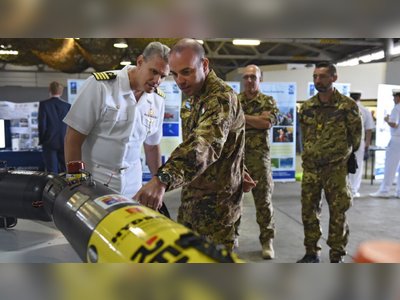
Omicron: How do you detect it?
What tests are used to detect Omicron?
Swabs from PCR tests, which are sent to a lab for analysis, detect whether people are infected with coronavirus or not.
Depending on which lab the swabs are sent to, some can also help identify particular variants, such as Delta or Omicron.
Between a third and a half of UK labs - but not all - have the required technology to do this.
PCR tests are the ones you can order from the government website if you have symptoms, or order from a private company if you need one for travel purposes. There are many different makes.
How do we know that Omicron is in the UK?
The swabs from PCR tests that have given a positive result for what looks like Omicron have been sent to a lab for a full genetic analysis, using a technique known as genomic sequencing.
This has confirmed that some people have indeed been infected with the latest variant.
This laboratory analysis of the genetic material of the virus is key to detecting variants and finding out how they act.
It is likely there are many more cases of the variant already in the UK, but as yet undetected, because it can take a couple of weeks for this process to be completed.
The dominant variant of coronavirus is still Delta, which is responsible for around 40,000 new cases every day in the UK.
Do lateral flow tests detect Omicron?
Rapid or lateral flow tests, which can be used at home, can't tell you which variant you're infected with - but they are still thought to be able to tell you if you're negative or positive, even with Omicron.
What's the difference between Omicron and other variants?
The Omicron variant has lots of different mutations that haven't been seen before, and many that have.
A large number of them are on the spike protein of the virus, which is the target of most vaccines, and that's the main concern.
In standard tests, Omicron has what's known as an "S-gene dropout" which makes tracking positive cases which resemble the variant pretty easy.
But not all "S-gene dropouts" will necessarily be omicron - full genomic sequencing is needed to be sure.

What role does genomic sequencing play?
Analysing the genetic make-up of the virus is a crucial part of working how which variant is involved.
Up to 20% of the swabs from positive test results in the UK each week, or around 60,000 cases, are sent for genomic sequencing.
By looking closely at the genetic material provided, scientists can confirm whether someone is positive with Omicron or the already widely-circulating Delta.
This process only provides information about the swabs that are analysed - but using those results, scientists are able to estimate what proportion of new cases could be the new variant.
Scientists in the UK and South African are at the forefront of this technology, which is why most new variants have been detected in these countries. But that doesn't always mean they originated there.
What do we know about Omicron?
Very little is known about how the variant acts or how much of a threat it could be.
For example, it's not clear if it spreads more easily, if it makes people more unwell than other variants or if protection from vaccines will be less than previously thought.
But on paper it looks worrying and that's why governments are acting quickly, in case it's bad news.











